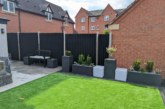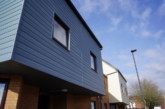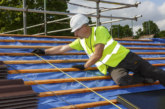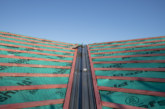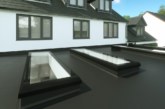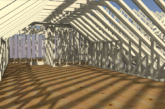
John Lambert, general manager at Forticrete, discusses how concrete-based tiles can be used to create distinctive properties that blend in with the local vernacular.
From Bournemouth to the Yorkshire Dales, naturally weathered tiles line the roofscapes of our rural landscape. So when it comes to adding a new property in rural locations, it’s important to specify materials that enhance the natural beauty.
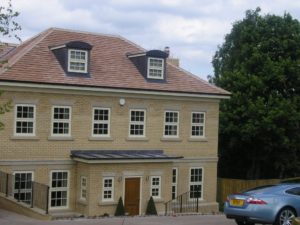 Natural slate has long been a popular choice of roofing tile for the UK built environment due to its rustic finish and longevity. However, leading manufacturers have been producing innovative alternatives to natural stone or slate since the 1920s. These visually sympathetic materials are so in-keeping with the authentic character of the surrounding area that in some instances, the use of stone slate alternatives has gone unknown.
Natural slate has long been a popular choice of roofing tile for the UK built environment due to its rustic finish and longevity. However, leading manufacturers have been producing innovative alternatives to natural stone or slate since the 1920s. These visually sympathetic materials are so in-keeping with the authentic character of the surrounding area that in some instances, the use of stone slate alternatives has gone unknown.
One such alternative capable of standing the test of time and replicating the charm and weathered appeal of natural slate, is concrete-based roof tiles.
Achieving popularity post-war, with the housebuilding industry becoming aware of the advantages of economy, buildability and durability, by 1960 nearly 80% of all new roof tiles were made from concrete. As a result, many of the roofs on rural properties previously believed to be built from natural stone and slate, are in fact comprised of concrete-based alternatives.
Planning requirements
As one of the most prominent features on a property, the choice of roofing material will have a huge impact on the overall aesthetics and feel of a building. As a result, local planning regulations dictate that when it comes to housing and commercial roofing projects, it is vital that housebuilders and developers specify highly durable tiles that not only enhance a building’s aesthetic, but ensure that it complements the surrounding area.
The problem is that many local planners continue to favour the use of natural stone and slate despite the previous unknowing use of concrete-based tiles, causing a challenge for housebuilders and developers. Whether it’s a barn conversion or a charming development of mews homes, housebuilders and developers need to ensure any new home is designed as part of a greater whole, considering the links between all elements – old and new.
For example, concrete-based tiles such as Hardrow which have a distinctive matt finish, sit comfortably amongst the older, more weathered properties in the surrounding area. However, alternative materials can often have a glossy, shiny, smooth surface, with a different textured finish which not only stand out across the roof landscape, but weather and age differently.
Traditional appearance
Offering virtually the same architectural properties as natural stone or slate, specialist concrete tiles mellow with age and can be laid in broken bond, random widths or diminishing courses for an authentic traditional look.
These highly versatile tiles are available in a wide range of subtle and natural colours, all carefully balanced to suit regional preferences to simplify and speed-up the planning process. As with natural stone, the individual colouring of these tiles vary slightly from slate-to-slate, recreating the traditional appearance local planners crave that is so hard to achieve within tight budgets.
Weathered blend
Housebuilder, MacBryde Homes, had to take local planning requirements into consideration when roofing its Belvedere Park development, situated in the highly sought-after conservation area of Neston, Cheshire. Most of the buildings in the area featured natural stone slate roofs, leading the local planning authority to set specific planning requirements that meant any materials specified would have to blend seamlessly with the local vernacular.
MacBryde Homes picked Forticrete’s highly durable Hardrow Slates in Twilight after a number of alternative products failed to sufficiently compliment the large format slates used historically on existing Victorian and Edwardian properties in close proximity. The housebuilder specified Hardrow Slate because it offers the same architectural properties as natural slate, with an aesthetically pleasing finish at a fraction of the cost.
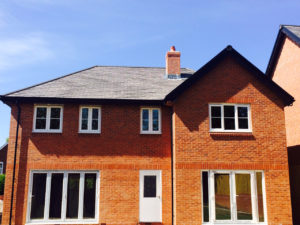 In addition, with so many shades to choose from, MacBryde Homes were able to carefully select the perfect weathered blend which would complement the surrounding environment and properties. This meant that planners were happy to approve its use, which helped speed up the planning approval process.
In addition, with so many shades to choose from, MacBryde Homes were able to carefully select the perfect weathered blend which would complement the surrounding environment and properties. This meant that planners were happy to approve its use, which helped speed up the planning approval process.
Suitable for use in regions where a natural stone slate appearance is required, Forticrete’s Hardrow roof slates are manufactured with a slight variation in dimensional tolerance, adding to the product’s character when laid.
The natural look
Local planning offices don’t want properties which look unnatural and out of place within the local area which is why they have long favoured natural stones and slates for roofs across rural England.
So, when it comes to specifying products for such projects, it is vital that housebuilders and developers are fully aware of the innovative alternatives available to them and turn to building product manufacturers to guide and educate them on how they can provide the versatility, performance and aesthetics required to meet planning requirements.
For more information click here

